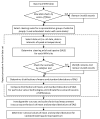Investigation of Weigh-in-Motion Measurement Accuracy on the Basis of Steering Axle Load Spectra
- PMID: 31349609
- PMCID: PMC6695725
- DOI: 10.3390/s19153272
Investigation of Weigh-in-Motion Measurement Accuracy on the Basis of Steering Axle Load Spectra
Abstract
Weigh-in-motion systems are installed in pavements or on bridges to identify and reduce the number of overloaded vehicles and minimise their adverse effect on road infrastructure. Moreover, the collected traffic data are used to obtain axle load characteristics, which are very useful in road infrastructure design. Practical application of data from weigh-in-motion has become more common recently, which calls for adequate attention to data quality. This issue is addressed in the presented paper. The aim of the article is to investigate the accuracy of 77 operative weigh-in-motion stations by analysing steering axle load spectra. The proposed methodology and analysis enabled the identification of scale and source of errors that occur in measurements delivered from weigh-in-motion systems. For this purpose, selected factors were investigated, including the type of axle load sensor, air temperature and vehicle speed. The results of the analysis indicated the obvious effect of the axle load sensor type on the measurement results. It was noted that systematic error increases during winter, causing underestimation of axle loads by 5% to 10% for quartz piezoelectric and bending beam load sensors, respectively. A deterioration of system accuracy is also visible when vehicle speed decreases to 30 km/h. For 25% to 35% of cases, depending on the type of sensor, random error increases for lower speeds, while it remains at a constant level at higher speeds. The analysis also delivered a standard steering axle load distribution, which can have practical meaning in the improvement of weigh-in-motion accuracy and traffic data quality.
Keywords: axle load sensors; axle load spectra; bending beam; heavy traffic; overloaded vehicles; overweight vehicles; piezoelectric; piezoquartz; steering axle; weigh-in-motion.
Conflict of interest statement
The author declares no conflict of interest.
Figures










References
-
- Pais J.C., Figueiras H., Pereira P., Kaloush K. The pavements cost due to traffic overloads. Int. J. Pavement Eng. 2018;8436:1–11. doi: 10.1080/10298436.2018.1435876. - DOI
-
- Rys D., Judycki J., Jaskula P. Analysis of effect of overloaded vehicles on fatigue life of flexible pavements based on weigh in motion (WIM) data. Int. J. Pavement Eng. 2016;17:716–726. doi: 10.1080/10298436.2015.1019493. - DOI
-
- Pais J.C., Amorim S.I.R., Minhoto M.J.C. Impact of Traffic Overload on Road Pavement Performance. J. Transp. Eng. 2013;139:873–879. doi: 10.1061/(ASCE)TE.1943-5436.0000571. - DOI
-
- Budzyński M., Ryś D., Kustra W. Selected Problems of Transport in Port Towns—Tri-City as an Example. Pol. Marit. Res. 2017;24:16–24. doi: 10.1515/pomr-2017-0016. - DOI
-
- Rys D., Jaskula P. Effect of Overloaded Vehicles on Whole Life Cycle Cost of Flexible Pavements. In: Zhang K., editor. Proceedings of the GeoChina 2018, Testing and Characterization of Asphalt Materials and Pavement Structures, Sustainable Civil Infrastructures; Hangzhou, China. 23–25 July 2018; Basel, Switzerland: Springer International Publishing; 2018. pp. 104–117.
LinkOut - more resources
Full Text Sources

